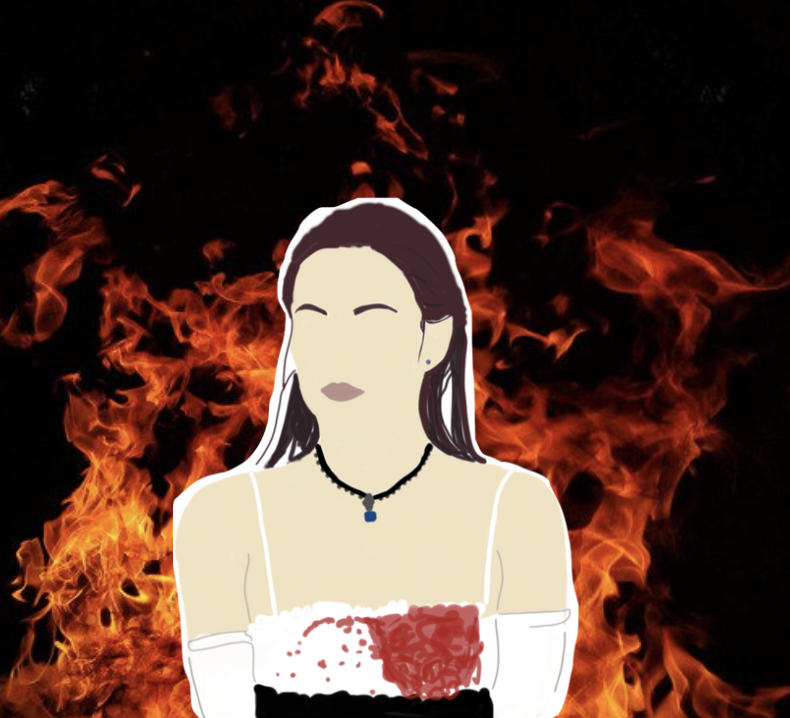Please visit response.fsu.edu for official FSU updates and resources.
Jennifer’s Body and the Female Monster
 Throughout film history, women have been portrayed as overemotional, controlling, and fragile people. In classic horror films, these ideas are reinforced through violence against women and hyperemotional reactions that are often sexualized. Across the horror genre and media in general, women work well as monsters when responding to imposed stereotypes of manipulation, assertive behavior, uncontrollable emotions, and fragility. They are also often victimized in the horror genre, which creates the narrative that women need to get revenge in some way.
Throughout film history, women have been portrayed as overemotional, controlling, and fragile people. In classic horror films, these ideas are reinforced through violence against women and hyperemotional reactions that are often sexualized. Across the horror genre and media in general, women work well as monsters when responding to imposed stereotypes of manipulation, assertive behavior, uncontrollable emotions, and fragility. They are also often victimized in the horror genre, which creates the narrative that women need to get revenge in some way.
In the female-directed film Jennifer’s Body, Jennifer Check (Megan Fox) is introduced to the audience as the “it girl” in school, who most of the boys seem interested in. This introduction helps develop her character and contextualizes the sexual overtones of her actions later in the film. In stark contrast to Jennifer, her best friend, Needy (Amanda Seyfried), represents the typical American “good girl,” who is scared of falling out of line in any way and lives a generally mundane life. Needy’s boyfriend Chip, like many of the other male characters in the film, appears threatened by Jennifer’s overt sexuality and her rebellious nature and fears that Jennifer will be a bad influence on Needy. The two female leads represent very different female archetypes that are often shown in media, but rarely as friends. However, the characters become more similar as the plot progresses, because despite their motives being very different, Needy and Jennifer are both villains by the end of the movie.
While many facets of this film may be perceived through a feminist lens, it still manages to feed into some of the stereotypes of women in horror/thriller films. At the start of the film, Jennifer Check’s judgement becomes clouded by her desire to sleep with the lead singer of a small band named Low Shoulder that happens to be visiting Devil’s Kettle. After an untimely fire leaves most of the concert’s attendees wounded or dead, Needy and Jennifer catch their breath outside following their swift departure from the building. Low Shoulder suddenly appears before them to take Jennifer away in their suspicious van. Despite Needy’s pleas, Jennifer proceeds to willingly hop in the van completely unaware of the cult rituals that await her. The next morning, there is a shift in Jennifer’s personality that seems detached from reality; we later find out this is a result of a demon who possesses her. She becomes a half-dead, man-eating high schooler, while maintaining the pretty and popular girl facade.
Aside from the film’s overall risqué nature, Jennifer’s Body uses irony by conforming to some older film production codes from the 1930-60s that demanded on-screen punishment for characters that were considered morally wrong or evil. At the time, it was a way to censor films, potentially making them more palatable to the general public. Given that Jennifer is a man-eating demon, it makes sense that her morality would be questioned and need to be rectified in some way before the end of the film.
Aside from the violent acts displayed throughout the film, Jennifer’s sexuality acts as her main weapon. This speaks volumes about how female characters are developed in the media and how our culture views sexual desires as a threat. Without the promise of some type of sexual gratification, Jennifer would not have been able to lure all of the victims that she did. There seems to be some irony in this message as well, since physical beauty is often a means of justification for victimizing women in the horror genre. In classic horror films like Psycho, the female victim is put at fault for her appearance, which attracts the monster/killer. Jennifer Check serves as a blueprint for the feminist movie monsters as she punishes the male gaze by luring men attracted to her under false pretenses. In doing so, Jennifer is able to catch the male victims at their most vulnerable, acting as a male antagonist would.
Written by & Art by: Isabella Harrison



